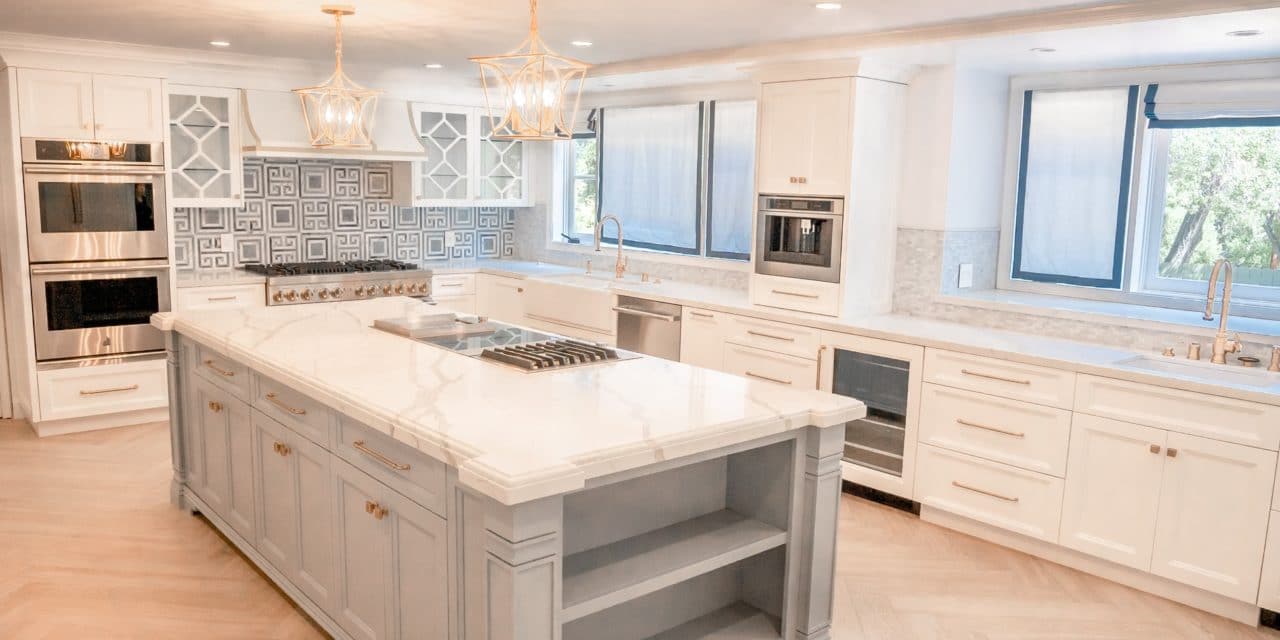[ad_1]
When designing your kitchen, you may be thinking about cabinet styles, flooring, and appliances when creating the look and feel. What many don't realize is that the kitchen sink can have a big role in your design. While it's only used for washing dishes, rinsing food, and washing your hands, the kitchen sink comes in many varieties.
There are many common old styles that people go with but over the years the designs of kitchen faucets have expanded in look and function. Whether you are renovating, your old faucet is leaking, or you're ready for an update, here are the items to consider when choosing your kitchen faucet.
Your Current Faucet and Sink
Take a look at your sink to decide if you want to keep that when getting a new kitchen faucet. If you are going to keep the sink, then you'd be able to use the holes in the sink deck that are already in place. From there you can decide if you want to add a spray hose or sink dispenser.
You may decide to get a new sink, especially if you're going from a deck-mounted faucet to a wall-mounted faucet. New faucets will range in on to four holes varieties. You can always purchase a faucet that includes a deck plate at the base to cover up old sink holes.
If you choose a deck-mounted faucet, one that mounts directly to the countertop and not the sink, you'll get a seamless look but it'll take up countertop space. If you choose a wall-mounted faucet, make sure the distance the water projects will match your sink. It can make countertop cleanup easy but in colder weather you'll have to insulate against freezing.
For those keeping your sink, make sure you choose a design that would go with the sink style. If you have a stainless-steel sink, it may not look right to add an antique-styled brass faucet.
Where to Begin
When you begin your search you'll have to make decisions between the spout type, height, and number of handles. Many people are choosing the pull-down spray attachment for the spout type, but you can always get a side-mounted spray hose. The height can range from 10 to 18 inches so choosing the right height would be based on your sink size. Finally, you can always get hot and cold handles but most pull-down faucets only have one handle.
From there you can make decisions about how high-tech you want to go. Consider if you want or need to spend extra on any of the following:
· Hands-free operation
· Built-in water filters
· Touch-sensitive controls
· Spray volume control
· Water pause buttons
Your spout style is something to consider. The “gooseneck” or high arc faucets are trending because it allows more room for cleaning large pots and pants. If you have a large sink then you may want something with a wider spray.
Materials and Finishes
Everyone will find they have their own style to put into their decision. Chrome-plated brass is a popular finish that many choose. Solid brass faucets with ceramic disc valves used to control water flow are going to offer longevity. Many choose stainless steel hoses since they don't kink as much as other styles.
Again, make sure your kitchen design matches the faucet style. A modern kitchen may not look right with a rustic, farmhouse themed kitchen faucet. Faucets can also vary in angles, curves, and details.
When you choose your materials and finishes, whether that be nickel, chrome, bronze, black, stainless steel, etc., make sure to buy accessories like soap dispensers from the same collection since many manufacturers' finishes may vary slightly.
Price and Quality
For a more durable faucet, choose stainless steel, solid brass, or a faucet with a ceramic disk valve. It's more expensive than plastic parts. A heavier faucet in weight will indicate better quality. Solid-brass bodies will last the longest. Faucets with plastic parts don't last and are cheaper. Eventually you might have to replace it which is an additional cost to you.
There are many factors to consider when choosing the look and functionality of your kitchen faucet. Be sure to consider your needs and what will work best for your kitchen before making your purchase.
[ad_2]
Source by Steven Gressley


